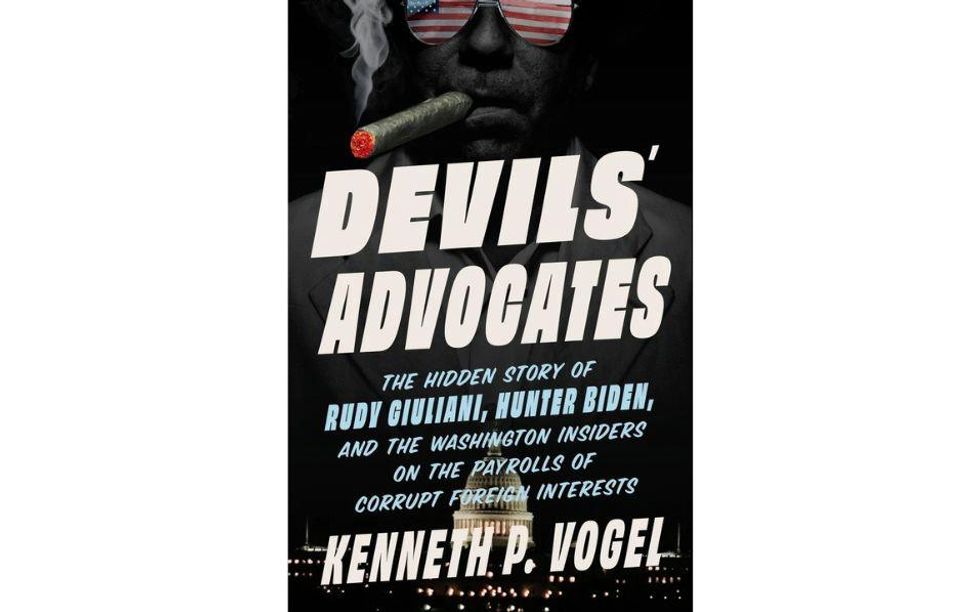This article first appeared in the Nonzero Newsletter and is republished with the author’s permission.
Here’s a joke I recently heard a Russian tell:
A Russian is on an airliner heading to the US, and the American in the seat next to him asks, “So what brings you to the US?” The Russian replies, “I’m studying the American approach to propaganda.” The American says, “What propaganda?” The Russian says, “That’s what I mean.”
If you don’t get the point, I can help. A few weeks before I heard this joke, I heard a Russian make the point explicitly: Yes, Russia’s state-controlled media is full of propaganda, but at least most Russians are aware of that and take the prevailing narrative with a grain of salt; Americans, in contrast, seem unaware that their own prevailing narratives are slanted.
I think there’s some truth to this, and I think the Ukraine war is a case in point. I don’t just mean that mainstream media’s coverage of the war is biased (though I think it is, as tends to be the case during wars). I mean this coverage exemplifies the difference between American and Russia propaganda—and so helps explain the difference, asserted by that joke, between American and Russian attitudes toward propaganda.
The main reason for this attitudinal difference, I think, isn’t that Americans are more gullible than Russians. It’s that America is a liberal democracy with a fairly complicated media ecosystem. It’s harder in this pluralistic system than in Russia for a single powerful person or institution to create a single dominant narrative. So if propaganda is going to happen here, it will have to happen less straightforwardly than in Russia, with less in the way of centralized control. And that makes it harder to pin down.
In other words: A pluralistic system, while in some ways making it more difficult for propaganda to prevail, also offers the propaganda that does prevail good camouflage.
At least, that’s my working hypothesis. One way to flesh out this hypothesis is to take a look at a DC think thank called the Institute for the Study of War.
The name may sound familiar. If you’ve been reading much about the Ukraine war, you’ve probably come across it. Reporters who draw on research from ISW often credit it.
But there are two things about the Institute for the Study of War that you may not know.
First is the extent of its influence. Since war broke out in February, ISW has been the elite media’s go-to think tank for information and analysis. Barely a day goes by that it isn’t cited by a reporter in either the New York Times, the Washington Post, or the Wall Street Journal. In the past six days—the first six days of this month—it has been cited in at least ten articles that appeared in one of those outlets.
The second thing you may not be aware of is how ideological the academic-sounding Institute for the Study of War is. It has neoconservative roots and is run and staffed by pretty extreme hawks. Over the years it has gotten funding from various corners of the arms industry—General Dynamics, Raytheon, lesser known defense contractors, and big companies, like General Motors, that aren’t known as defense contractors but do get Pentagon contracts.
Before saying more about ISW, I want to emphasize that I’m not claiming to have caught it in some capital crime. The Institute doesn’t spread untruths, even if it’s selective about the truths it promotes and tactical in how it arranges them. That’s part of my point: One reason propaganda often flies under the radar in America is that it can be subtle.
Another claim I’m not making is that ISW has exerted pivotal influence in the case of Ukraine. I’m not even saying the larger network of hawkish think tanks it’s part of has been pivotal. When a big country run by a famously ruthless autocrat invades a smaller neighbor that’s a democracy, Americans will naturally (and rightly) side with the country that got invaded and will favor giving it support. In that sense, the Institute for the Study of War, along with other voices that advocate robust military spending, has been pushing on an open door.
Still, $54 billion is a lot of money, and that’s how much aid, most of it military, the US has committed to Ukraine over the past three months. And the $40 billion of that passed by Congress in May got overwhelming support (368-57 in the House, 86-11 in the Senate)—pretty remarkable at a time when inflation is widely feared and deficit spending is widely said to be one of its causes.
Whatever you think of this aid—and, again, I consider helping a nation resist invasion a generically good cause—you can’t deny that the climate of American opinion on Ukraine is very favorable for defense contractors. I think the Institute for the Study of War is one reason for that—even if a small reason among bigger ones. And, more to the point, ISW is a case study in how influence on a wartime narrative can be exerted in barely perceptible ways.
The president and founder of the Institute for the Study of War is Kimberly Kagan, a military historian who is married to Frederick Kagan, who is also a military historian and does work for ISW. Frederick is a well-known neoconservative, though not as well-known as his brother Robert. In the 1990s, Robert Kagan, along with Bill Kristol (who is on ISW’s board), founded the Project for a New American Century, which in the view of some observers played an important role in convincing George W. Bush to invade Iraq.
Kimberly and Frederick Kagan have cultivated close ties to the Defense Department—sometimes raising questions about whether the ties were too close. A 2012 Washington Post piece said General David Petraeus had turned the couple into “de facto senior advisers.” The Post continued:
The pro-bono relationship, which is now being scrutinized by military lawyers, yielded valuable benefits for the general and the couple. The Kagans’ proximity to Petraeus, the country’s most-famous living general, provided an incentive for defense contractors to contribute to Kim Kagan’s think tank [ISW]. For Petraeus, embracing two respected national security analysts in GOP circles helped to shore up support for the [Afghanistan] war among Republican leaders on Capitol Hill.
All of this helps explain why noted phrasemaker Mickey Kaus has called the Kagan family “the Kagan industrial complex.” Speaking of which:
Robert Kagan’s wife, Victoria Nuland, is the state department official who very publicly supported Ukraine’s 2014 Maidan Revolution—the overthrow of pro-Russia President Viktor Yanukovych, which led Russia to seize Crimea and give military support to secessionist rebels in the Donbass. Nuland also played a behind-the-scenes role in this transition of power that, according to some of her detractors, amounted to orchestrating a coup.
And as long as we’re going down rabbit holes: The Kagan-Kristol Project for a New American Century was funded by arms makers, thanks largely to the work of Lockheed Martin executive Bruce P. Jackson, who became a director of PNAC. Jackson had earlier organized the US Committee to Expand NATO, which successfully lobbied for what its name suggests it lobbied for. Some people think NATO expansion—in particular George W. Bush’s 2008 addition of Ukraine to the list of future members—helped cause the Ukraine war, but in any event NATO expansion has over the past quarter century made lots and lots of money for Lockheed Martin and other arms makers.
But I digress. Back to the Institute for the Study of War.
ISW, like some other highly ideological think tanks, exerts its influence along two main paths: (1) explicitly opining about policies; (2) doing reporting and analysis that is ostensibly objective but may implicitly favor certain policies. For example:
As Sarah Lazare of In These Times has pointed out, in August of last year, as the US was withdrawing from Afghanistan (1) retired Gen. Jack Keane, chairman of ISW’s board, was on TV arguing against the pullout, while (2) ISW was putting out papers that didn’t explicitly oppose withdrawal but warned of various kinds of bad consequences. (Lazare notes that, at the same time, the CEO of CACI International, one of ISW’s funders, was warning on a conference call that the Afghanistan withdrawal would hurt its profits in the next fiscal year.)
In the case of the Ukraine War, ISW’s reporting and analysis activities have been extraordinary. The Institute issues daily battlefield updates, complete with maps of three regions of Ukraine that show shifts in territorial control. These summaries are intelligently and crisply written and cover a lot of ground efficiently. If I were a newspaper reporter writing about the war, I would find them appealing.
So are you ready for my big reveals about glaring bias in ISW analysis? There aren’t any! That’s part of my point: The bias imparted by ISW is subtle. Its incremental effects are barely perceptible, but they add up over time. And what they add up to, basically, is The War According to Our Side. Little shadings here and there create more or less the picture of the war that the Ukrainian government is trying to present.
Here, for example, is a paragraph from a Wall Street Journal piece last week: “Ukrainian forces in the south, near Kherson, conducted a successful counteroffensive over the weekend, according to the Institute for the Study of War. Though they were unlikely to retake more territory, they might force Russia to deploy more resources to the region.”
Wait a second! You’re calling a counteroffensive that takes no territory “successful”? Just because it “might” force Russia to redeploy forces?
Well, OK, but if that’s your criterion, shouldn’t you have called some past Russian assaults around Kharkiv that took no territory “successful”? After all, it was speculated that their purpose was to keep Ukraine from concentrating more resources in the Donbass.
No, calling a superficially unsuccessful Russian attack successful isn’t the kind of thing ISW does. The kind of thing it does is depict superficially successful Russian attacks as only mixed successes. Thus, on the day that the big story was Russia’s penetrating the perimeter of the important city of Severodonetsk, the Wall Street Journal could at least leaven that bad news with this: “Russia’s forces were so concentrated on Severodonetsk that they likely wouldn’t be able to conduct major operations elsewhere in the country, according to the Institute for the Study of War.”
Maybe so. But given that Severodonetsk is the last big obstacle to Russia’s securing control of Luhansk province—one of the two provinces Putin originally vowed to secure in the course of this war—that would seem to be meager consolation.
I’m not saying it doesn’t qualify as a silver lining of sorts. But I am saying that ISW consistently finds more Ukrainian silver linings than Russian silver linings. Way, way, way more.
It may not take much conscious effort for the crew of five ISW analysts (including Frederick Kagan) who prepare these reports to put a pro-Ukraine spin on them. To some extent the spin is structural; ISW seems to have a policy of taking battlefield reports from the Ukrainian government seriously but not taking reports from the Russian government seriously.
Among the consequences of this policy is a subtle and important one:
Since the Ukrainian government, naturally enough, isn’t eager to concede combat losses, some Russian battlefield successes aren’t very recent by the time Ukraine, and hence ISW, acknowledges them. And you don’t lead with old news! So here, for example, is the first sentence of ISW’s summary of events for May 22 (boldfaced, in keeping with ISW practice for the lead sentence of each day’s summary): “Russian forces made only minimal gains in eastern Ukraine on May 22.” And here is the sentence that is relegated to second place and isn’t boldfaced: “New reporting confirmed that Russian troops previously recaptured Rubizhne in northern Kharkiv Oblast, on May 19.”
Capturing a village near the city of Kharkiv seems like bigger news than not capturing any villages in the East. So why doesn’t ISW lead with that? Because it’s old news—it happened several days earlier. But back when it happened, ISW couldn’t confidently report it, because only Russia, not Ukraine, had said it happened. So newspaper reporters relying on ISW wouldn’t have become aware of this setback for Ukraine until it was too stale to bother with. This slow-motion burial of bad news happens again and again; it’s built into ISW’s methodology.
When you add up all of ISW’s little instances of spin, how much do they matter? I don’t know. (Who’s got time to even find them all, much less add them up?) Certainly if you drew a schematic diagram of American propaganda as it pertains to national security—including all the interest groups that try to impart their spin, and where their money comes from, and which media they succeed in influencing, and so on—ISW wouldn’t come close to dominating the diagram.
But that’s one of my main points. This diagram isn’t as streamlined as the Russian version would be. There are so many moving parts in American opinionmaking machinery that it’s hard to figure out what’s going on—hard to follow all the institutionally imparted biases to their roots.
Indeed—and I guess this is my other main point—it’s apparently hard to follow even a single institution’s bias to its roots. I feel pretty sure that very few readers of the New York Times, the Wall Street Journal, or the Washington Post read passages attributed to the Institute for the Study of War with the grain of salt that is appropriate, given its ideology and its funding—because, for one thing, they don’t know about the ideology and the funding.
More surprisingly—and more depressingly—a lot of presumably sophisticated American journalists seem equally uninformed. At least, that’s the only explanation I have for why America’s elite media outlets routinely and uncritically relay ISW takes.
Thus, the New York Times yesterday reported: “Ukraine has retaken large parts of Severodonetsk, the Luhansk city Russia has concentrated on capturing, the Institute for the Study of War reported on Sunday. The Washington-based research group said Ukraine’s ability to push Russian troops back to the city’s eastern outskirts was more evidence of Moscow’s declining combat power.”
Now, it may well be that Moscow’s declining combat power is the explanation for any recent Ukrainian advances, and that the wind is therefore at Ukraine’s back (though this morning’s Washington Post headline—“Severodonetsk situation ‘has worsened’ for Ukraine, official says”—suggests maybe not). But if I were a reporter and I knew about ISW’s background, I don’t think I’d be relaying its conjectures unless I was balancing them with conjectures from think tanks that are considerably less hawkish.
Which, by the way, would be hard to do, because there aren’t any considerably less hawkish think tanks that provide elaborate daily analysis of the Ukraine war, in part because the less hawkish you are, the harder it is to get funding. There are no huge companies whose profits are tied directly to military restraint the way General Dynamics’s profits are tied to militarism.
That’s why if you see an op-ed on Ukraine—or Afghanistan or Iran or whatever—written by somebody at a think tank, the chances are good that the think tank has gotten money from defense contractors. And if you see a think tanker on cable news talking about those subjects, ditto. Not to mention the fact that, as Aditi Ramaswami and Andrew Perez documented in Jacobin, many talking heads who opine on the Ukraine war are getting money from the arms makers themselves (just as many Afghanistan war talking heads did).
I’m not saying the talking heads you see are shills. Think tanks don’t pay people to say things they don’t believe. Think tanks hire people who already believe things the funders of the think tanks want everyone—including you—to believe.
The sincerity with which these experts can thus profess their beliefs is one reason American propaganda is inconspicuous. Another reason is institutional diversity: different newspapers, different cable channels, different think tanks!
This much diversity is better than less diversity—one of many reasons I’d rather live in America than in Russia. Still, sometimes the diversity belies a deeper narrative unity, a unity grounded in the power of highly motivated special interests. And that’s especially true when the subject is national security.
Supporting Ukraine is a good cause. But undiscerning support is never a good policy. And it’s especially not good in the current situation—a war involving a nuclear superpower and various regional tinderboxes. So any impediments to a clear view of what’s going on in Ukraine, however subtle they may be, are things we should try to identify and overcome. And if you ask, “What impediments?” the answer is: “That’s what I mean.”
























